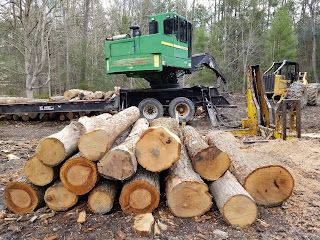
Timber harvesting
is an important management tool. When conducted with care and planning, it
allows owners to manage forests to meet multiple objectives. Landowners choose
to conduct timber sales for a variety of reasons. The decision to harvest may
be recommended in a management plan or it may be unexpected.
Regardless of the
reason, a successful timber harvest that meets landowner goals begins with a
forest resource professional developing a plan. Timber harvesting is a time
when landowners can improve their woods for what they value, such as enhancing
wildlife habitat, or cause real damage from which the woods might not recover
for generations.
A new publication
from Penn State Extension titled, “Timber Sales: A Guide to Selling Timber,” is
available to help landowners understand how timber sales are conducted. This 12-page
publication outlines a seven-step process. “It will assist forest landowners in
understanding how a timber sale is conducted and how to retain the services of
a forestry professional,” said Dave Jackson, forestry educator and publication
co-author.
“It is not a definitive how-to guide as
much of the process will depend on each specific situation.”
Timber harvesting
is not a process to be entered into lightly. Harvests involve complex decisions
across many issues, including ecology, forest operations, business, law, taxes,
marketing and negotiation. Harvests have both short- and long-term consequences
for the landowner and the forest. This publication is a first step in helping
landowners understand some of these consequences and how they can ensure a
successful outcome.
Selling timber is
complicated and requires substantial investments in time and a thorough
understanding of the industry. Timber sales have the potential to impact site
productivity, wildlife habitat, water quality, aesthetics, income, taxes,
estate planning — the list goes on. Those
lacking the proper level of experience should use this publication as a
reference to understand how foresters can help and what they strive to
accomplish on the landowner’s behalf.
A satisfactory
harvest experience is no accident; it is the result of thoughtful planning and
hard work. Planning is critical to ensuring a positive outcome, one that meets landowner
objectives and sustainability guidelines. To
ensure a successful timber sale, landowners must have a clear understanding of
the process, this new Extension publication can help.
The
publication, “Timber Sales: A Guide to Selling Timber,” is available as a free
downloadable PDF; printed copies are available for purchase. To view the full
publication, visit https://extension.psu.edu/timber-sales-a-guide-to-selling-timber
or call 877-345-0691.